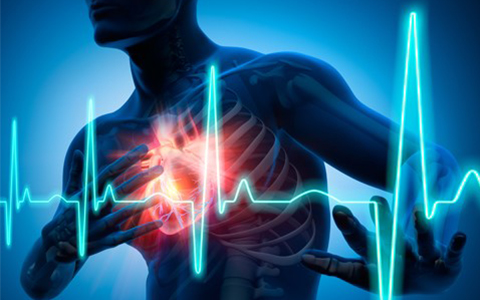Background
Project acronym: NANOATHERO
By using nanotechnology to diagnose and deliver drugs early and effectively to patients at risk of cardiovascular disease, the EU-funded NanoAthero project promises to save lives.

While heart attacks and strokes cause 40% of all deaths in the EU, some 80% of premature heart disease and stroke cases are preventable, according to the World Health Organisation. The five year EU-funded NanoAthero project, which began in February 2013, aims to address these issues head on.
It is still early days – and some promising strategies remain confidential – but project coordinator Didier Letourneur is confident that the consortium is on track to deliver on its ambitious programme, and thus bring real health benefits to EU citizens. Tackling cardiovascular diseases is a public health priority, and earlier diagnoses and ways to improve therapies are urgently required.
Tackling Europe’s top killer
Arteriosclerosis – a serious condition in which artery walls thicken as a result of calcium and fatty material build-up (plaque formation) – is a cardiovascular disease. A key trigger for heart attack is plaque rupture. The debris of the plaque can obstruct the flow of blood through the circulatory system, leading to a heart attack if it is in a coronary artery or a stroke if it is in a cerebral artery.
Fundamentally, the NanoAthero project is about taking the potential of nanotechnology and applying it to this particular field of medicine. The project is focused on developing effective, safe and innovative nanosystems – devices in the range of 1 to a few hundred nanometres (1 nanometre is a billionth of a metre) – that can identify patients at risk and then deliver drugs to where they are most needed.
“Nanosystems can be measured on the same scale as biological molecules,” explains Dr Letourneur. “They can be used to encapsulate imaging agents (to help identify patients at risk) or drugs (to treat affected areas). Nanosystem encapsulation also enables the controlled release of drugs. These important features make them particularly suited to for carrying imaging contrast agents to highlight vulnerable plaques with a high risk of rupture, or delivering therapeutic agents to stabilise these plaques.”
Although nanoparticle-based therapy is becoming more and more common in the treatment of cancer, no specific nanoparticle-based system has yet been approved for the diagnosis or therapy of cardiovascular diseases. This is partly because integrating a transport mechanism, a coating and an active molecule into the one nanosystem has so far proved challenging, and has not yet been clinically validated in the field of atherosclerosis.
The NanoAthero project aims to correct this. The consortium gathers together chemists, engineers, pharmacists, biologists and toxicologists from a range of research institutions, small- to medium-sized enterprises and pharmaceutical corporations from across Europe.
These experts share a strong belief that nanoparticle technologies can be developed and clinically proven to be effective in tackling cardiovascular diseases. Five nanosystems will be developed and trialled to deal with two clinical situations: blood clots (thrombus) and the build-up of plaque in arteries.
“Over the next five years, the NanoAthero project will integrate several key elements,” adds Dr Letourneur. “These include the preparation of dossiers on regulatory issues, risk and ethical assessments, the preclinical evaluation of diagnostic and therapeutic systems and clinical investigations of patients at high cardiovascular risk.”
This innovation was made possible by Israel’s continued participation in the official Horizon 2020 fund, managed in Israel by ISERD part of The Israel Innovation Authority (Formerly the Office of the Chief Scientist and MATIMOP). The initiative has taken Israeli R&D to the next level with the help of ground-breaking collaboration between scientists in Israel and Europe, as well as essential funding and support.
Project details
Project acronym: NANOATHERO
Participants: France (Coordinator), Germany, Denmark, Nederlands, Hungary, Austria, Israel, Italy, Switzerland, UK
FP7 Proj. N° 305033
Total costs: € 12 838 188
EU contribution: € 9 833 348
Duration: February 2013 – January 2018
